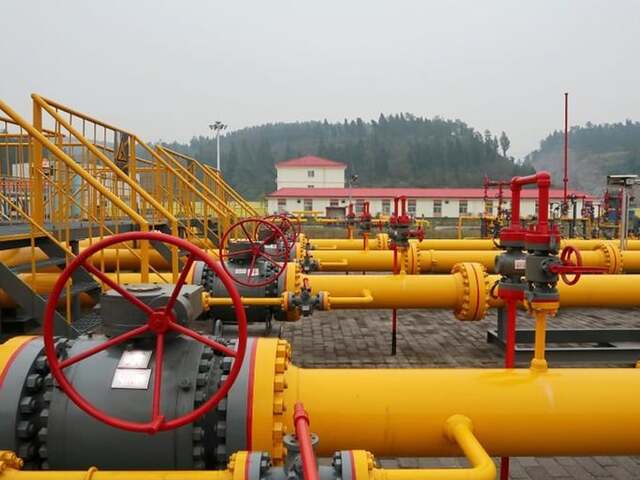By Reuters
Copyright brecorder

NEW YORK: US natural gas futures fell about 4percent on Thursday on a report showing energy firms added more gas to storage than expected last week when mild weather kept both heating and cooling demand low.
Front-month gas futures for October delivery on the New York Mercantile Exchange fell 10.9 cents, or 3.5percent, to USD2.991 per million British thermal units (mmBtu) at 10:32 a.m. EDT (1432 GMT).
The US Energy Information Administration (EIA) said energy firms injected 90 billion cubic feet (bcf) of gas into storage during the week ended September 12. That was the biggest weekly increase since June.
That was bigger than the 80-bcf build analysts forecast in a Reuters poll and compares with an increase of 56 bcf during the same week last year and an average build of 74 bcf over the past five years. In the spot market, meanwhile, gas prices at the Waha Hub in the Permian shale in West Texas remained in negative territory for a third day this week as pipeline maintenance, including work on Kinder Morgan’s El Paso Pipeline from Texas to California, continued to trap gas in the nation’s biggest oil-producing basin.
That was the eighth time Waha prices dropped below zero this year and compares with an average of USD1.63 per mmBtu so far in 2025, 77 cents in 2024, and USD2.91 over the previous five years (2019-2023).
Waha prices first averaged below zero in 2019. It happened 17 times in 2019, six times in 2020, once in 2023, and a record 49 times in 2024. The US National Hurricane Center said Tropical Storm Gabrielle in the central Atlantic would likely strengthen into a hurricane early next week as it moves northwest toward Bermuda. The system, however, is expected to turn to the northeast just before reaching Bermuda and is not expected to reach the US mainland.
The NHC also said a tropical wave near the Cape Verde Islands, off the west coast of Africa, had a 20percent chance of strengthening into a tropical cyclone over the next week as it moves west across the Atlantic Ocean.
Even though storms can boost gas prices by cutting output along the US Gulf Coast, they are more likely to reduce prices by shutting LNG export plants and knocking out power to homes and businesses. About 40 percent of the power generated in the US comes from gas-fired plants.
Financial firm LSEG said average gas output in the Lower 48 states fell to 107.4 billion cubic feet per day so far in September, down from a record monthly high of 108.3 bcfd in August.
Meteorologists forecast the weather will remain warmer than normal through at least October 3.
That late season heat, however, will not necessarily increase gas demand by much since it is more likely to reduce the usual increase in heating demand seen at this time of year rather than boost the amount of gas power generators burn to keep air conditioners humming.
LSEG projected average gas demand in the Lower 48 states, including exports, would rise from 102.8 bcfd this week to 103.4 bcfd next week. Those forecasts were similar to LSEG’s outlook on Wednesday.
The average amount of gas flowing to the eight big US LNG export plants eased to 15.7 bcfd so far in September, down from 15.8 bcfd in August. That compares with a monthly record high of 16.0 bcfd in April.
In other LNG news, Berkshire Hathaway Energy’s 0.8-bcfd Cove Point plant in Maryland is scheduled to shut soon for about a month of planned annual autumn maintenance.



